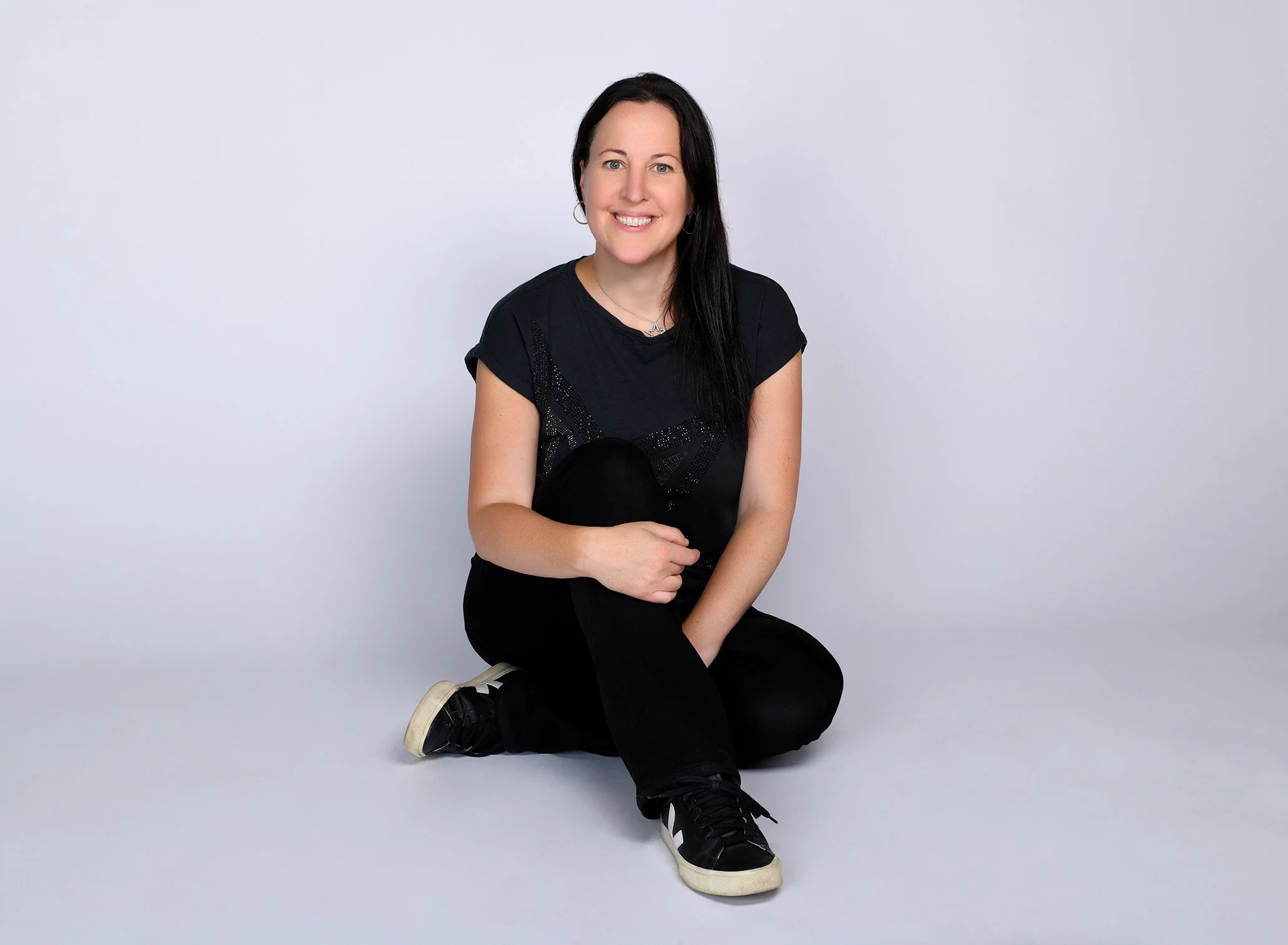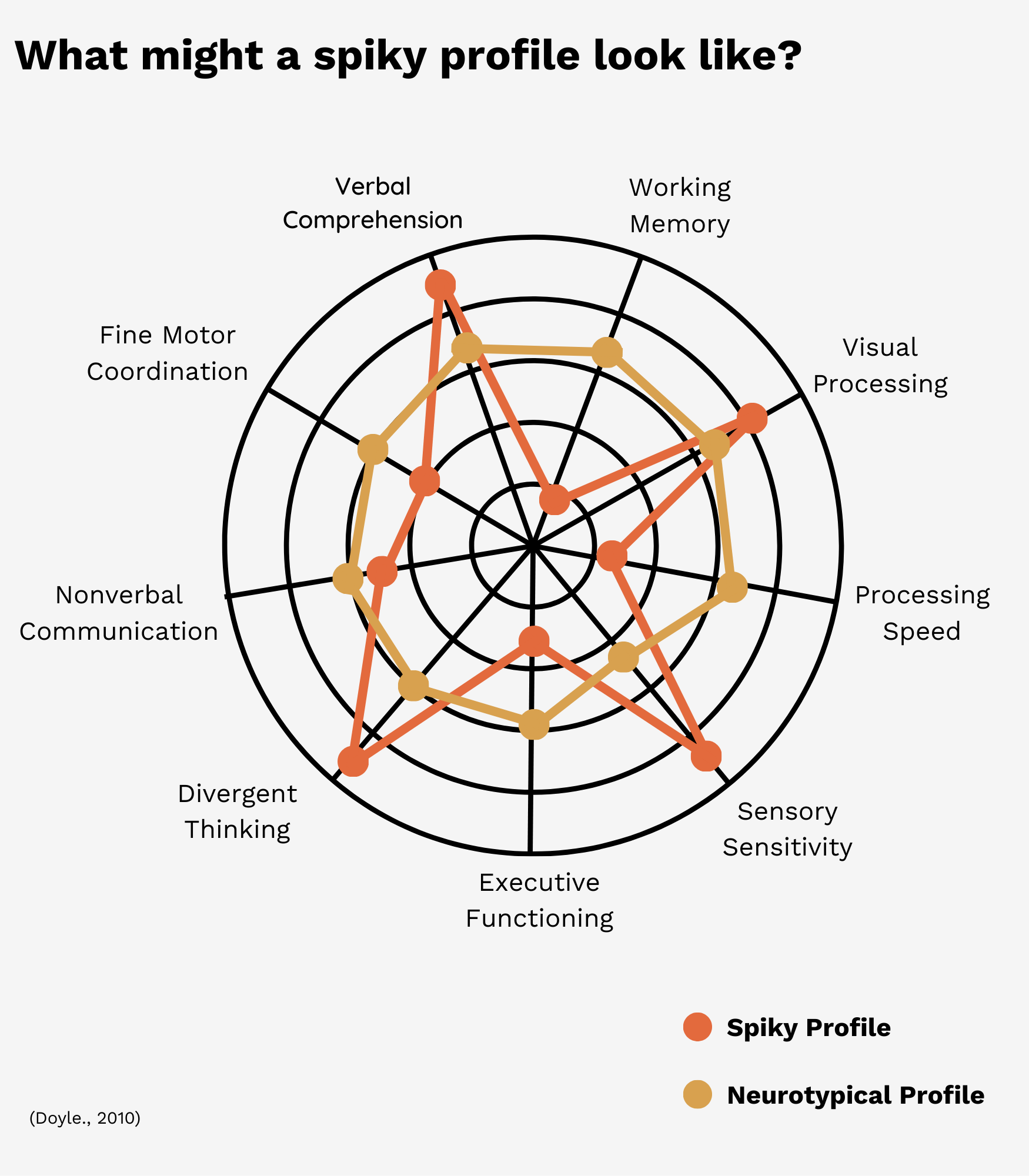Rethinking how we see and support neurodivergent learners.
Too often, support for neurodivergent children begins with a list of what’s wrong, what’s delayed, missing, or hard. But that lens doesn’t tell the full story.
Strength-based, talent-focused learning starts with what a child can do. It recognises that ability and struggle can exist side by side. It looks for patterns of potential and asks how learning environments can support them, not just accommodate challenges.
This approach isn’t about glossing over difficulty or calling every challenge a gift to be celebrated. It’s about shifting from deficit thinking to a more complete view of who a child is. When we start there, support becomes more meaningful, and children are more likely to thrive.
What are spiky profiles, and why do they matter?
Some children have learning profiles that are jagged rather than smooth, with high ability in some areas, and real challenges in others. These are dual exceptional, or twice-exceptional learners: kids with high learning potential alongside learning differences like ADHD, autism, or dyslexia.
Traditional systems don’t always know what to do with a spiky profile. They may offer support for the struggle but overlook the strength. Or celebrate the talent but miss the difficulty.
What these children need is a different kind of lens, one that can hold both at once. One that understands that twice-exceptional children aren’t split between strengths and struggles, but woven from both.
Their development is often asynchronous: cognitively advanced in some areas, yet needing support in others. They might be light years ahead in their thinking and still find reading impossible. They may crave deep intellectual engagement, while also needing movement breaks just to stay regulated. This isn't a contradiction, it's their truth. And when we stop trying to separate the challenge from the potential, we can begin to see the whole child with clarity.
Why I’m Here
I’ve spent my whole adult life in education, but not always in the classroom. I started work at a community centre in New York City. I was twenty two, wide-eyed and deeply aware that access to education wasn’t distributed equally. My job was to help kids get into university. What I didn’t realise then was that I was beginning a lifelong commitment to equity, identity, and belonging.
I trained at the Bank Street College of Education, known for its progressive, child-centred philosophy. It was there that I began to understand that the way we teach, and the systems we teach within, can either invite kids in or shut them out. I realised that feeling safe, seen, and connected is what opens the door to real learning.
After receiving my Master’s in Education, I joined the Harlem Children’s Zone, eventually becoming Assistant Director of Academics. It was a place where bold ideas met real-world complexity, and where doing what’s right didn’t always align with what was easy or expected. I saw firsthand how structural barriers show up in children’s lives, and how intentional design can either interrupt or reinforce them. The experience taught me how policy and practice meet on the ground, and about what it means to lead from values, not just goals.
Eventually, I moved back home to London, where I worked in pupil referral units, helping rebuild connections between schools and families for teenagers who’d been excluded from school. These were students who had already been made to feel like they didn’t belong in education. My job was to help them reconnect and find a place where they felt seen and valued. I learned that supporting a student’s sense of belonging is at the heart of meaningful learning.
For ten years, I served as Chair of the Education Committee at the King Alfred School, a progressive independent school in London. By then, I was already a parent to a twice-exceptional child whose mind works in deeply creative and unconventional ways. Navigating the education system as a parent opened my eyes in new ways. I saw how invisible a child’s strengths can be when they don’t come packaged in the usual academic boxes. I saw how quickly kids can be underestimated, misjudged, or overlooked when their brilliance comes with learning differences.
So here I am, a few decades in, still walking the bridges between home and school, between systems and students, between what we measure and what truly matters. My core leadership values haven’t changed. I lead with equity, because I know how uneven the playing field is. I lead with empathy, because behaviour is communication. I lead with advocacy, because I’ve never been able to stay quiet when someone is being left out or left behind.
Now, I’m focused on advancing strength-based, talent-focused education in the UK, especially for twice exceptional learners. And I am a doctoral student at the Bridges Graduate School of Cognitive Diversity, focused on identity and belonging for neurodivergent learners. I want to challenge how we identify, assess, and support neurodivergent students and how we view and respond to intelligence. I want to help build systems that see children in the depth and complexity of who they are. That means changing how we talk about ability. It means rethinking assessment. And it means making room for every child to grow boldly without compromise.
My leadership is rooted in the belief that all children have gifts. Our job and our responsibility is to build schools and learning environments that know how to see them.
That’s why I’m here, learning, building, listening and pushing forward. Because I believe we can do better. I believe we must do better. And I believe the future of education depends on our willingness to value every mind, every voice, and every story. Especially the ones we’ve been missing all along.
Watch my TEDx on the need for a strength-based lens in education
Want to stay in touch?
Join our mailing list to get practical resources, invitations to workshops, and strength-based insights for families and schools.


